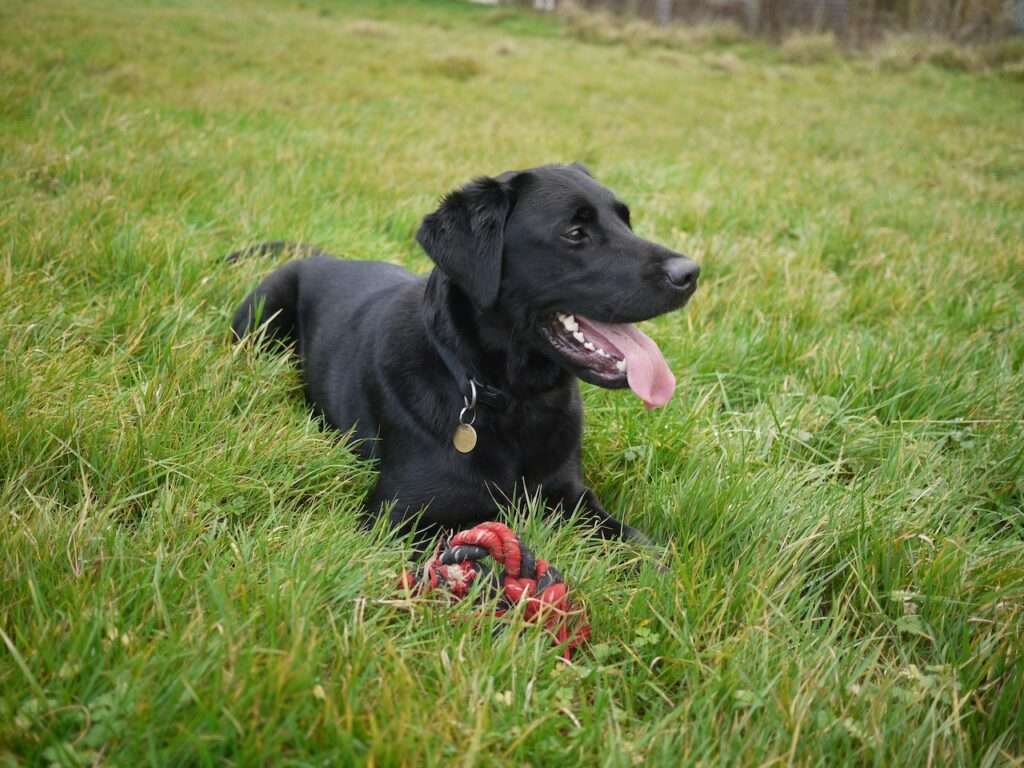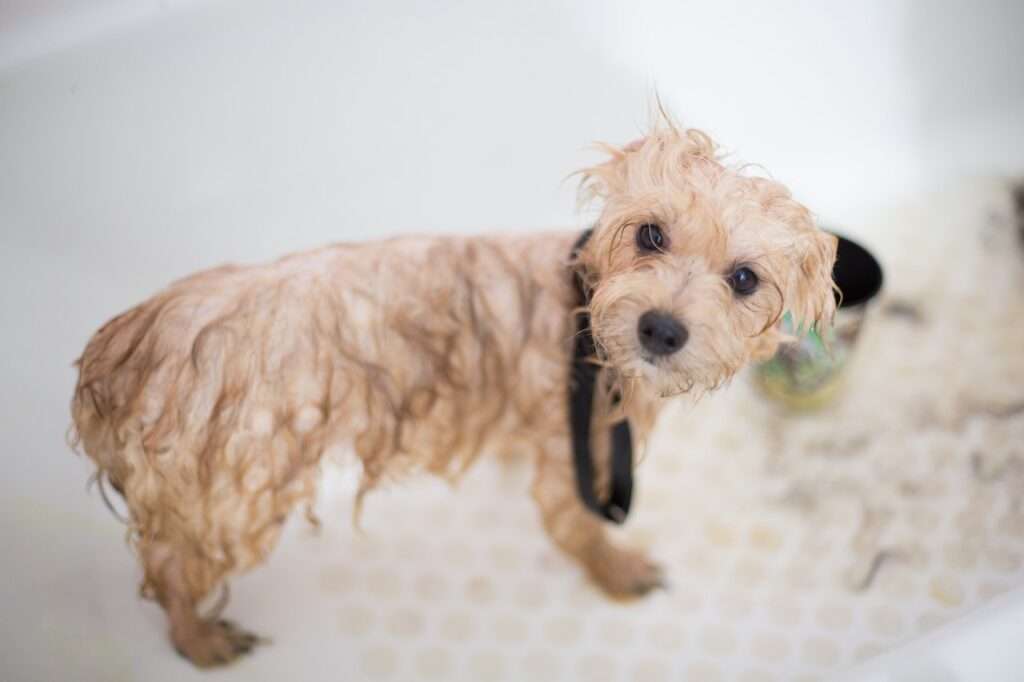How Do Dogs Get Fleas? The Ultimate Guide to Preventing and Treating Flea Infestations
As a devoted dog parent, you strive to provide the utmost care and happiness for your beloved four-legged companion. But even the most dedicated pet owners can face unexpected challenges, such as the notorious nuisance known as fleas. These tiny pests can disrupt your dog’s peace and comfort, making it crucial to understand how they can infiltrate your pup’s life and, more importantly, how to combat them effectively.
In this article, we embark on a journey to uncover the secrets of fleas and their impact on our canine friends. From their sneaky tactics to the telltale signs of infestation, we leave no stone unturned in unraveling the mysteries of these persistent pests. Equipped with this newfound knowledge, you’ll discover a range of powerful prevention and treatment methods that will help keep your furry companion flea-free and wagging with joy.
What Are Fleas?
Fleas are minuscule, wingless creatures that seem to possess superpowers when it comes to leaping. These pesky insects have a knack for making our furry friends their favorite blood buffet. With astonishing jumping abilities of up to 150 times their own body length, fleas can quickly become a formidable foe for your dog.
Sporting a sturdy, flattened body adorned with tiny spines, fleas are notorious escape artists. They can effortlessly evade capture, making them a challenge to eliminate once they’ve found their way onto your pet or into your home.
The life cycle of a flea encompasses four stages: egg, larva, pupa, and adult. The duration of this cycle can vary depending on the environmental conditions, lasting anywhere from a few weeks to several months. Fleas thrive in warm, humid settings, often seeking refuge in grassy areas like parks and backyards.
These miniature menaces can wreak havoc on your dog’s well-being. From causing incessant itching and skin irritation to triggering allergic reactions and even leading to anemia, the consequences of a flea infestation should not be underestimated. Moreover, fleas have the uncanny ability to transmit diseases, posing a serious threat to your dog’s health.
Thankfully, understanding the ins and outs of fleas and how to prevent and treat their presence is essential for safeguarding your dog’s health and happiness. By employing effective preventive measures and promptly addressing any signs of infestation, you can keep your pup itch-free and ensure a comfortable and enjoyable life for both of you.
How Do Dogs Get Fleas?

Fleas, those sneaky little hitchhikers, can find their way onto your beloved dog through various means. These resilient pests have a knack for hopping from one host to another, so your pup can easily pick up fleas from other animals they encounter. Whether it’s a friendly playdate with fellow dogs at the park or a curious encounter with a feline friend, these opportunistic fleas can leap from one unsuspecting host to the next.
But that’s not all—dogs can also acquire fleas from the great outdoors. Wildlife creatures like rabbits, squirrels, or even the neighborhood stray cat can unwittingly pass on these tiny critters to your pooch. Picture your adventurous dog exploring hiking trails, rolling around in the grass, or sniffing out hidden treasures at the local park. Those seemingly innocent surroundings may be teeming with fleas, just waiting to hitch a ride on your furry companion.
It’s not only animals that spread fleas; your dog can also encounter these pests in the environment itself. Fleas can lurk in grassy areas, soil, or even hide in the cozy fibers of your carpet. All it takes is a leisurely walk or a relaxing nap on an infested surface for fleas to seize the opportunity and jump aboard.
The resilience of fleas should not be underestimated. They can survive in the environment for extended periods, waiting patiently for the next unsuspecting victim. That’s why it’s essential to remain vigilant and take proactive measures to prevent flea infestations before they become a hairy situation.
How to Tell If Your Dog Has Fleas
When it comes to detecting those pesky fleas on your precious pup, knowledge is power. Being able to spot the signs early can save your dog from unnecessary discomfort and prevent the infestation from spiraling out of control. Here’s how you can tell if your dog has unwelcome flea visitors:
- Scratching and Biting: If you notice your dog incessantly scratching, biting, or licking their skin, fleas may be the culprit. Fleas are notorious for causing extreme itchiness, prompting your dog to seek relief by scratching or biting at the affected areas.
- Redness and Inflammation: Take a closer look at your dog’s skin. Flea bites can cause redness, inflammation, and small bumps or welts on the skin. Keep an eye out for any signs of irritation or discomfort.
- Hair Loss: Flea infestations can lead to hair loss, particularly in areas where your dog scratches or chews excessively. If you notice patchy or thinning fur, it could be a red flag for fleas.
- Flea Dirt or Eggs: Fleas leave behind telltale signs of their presence. Look for tiny black specks, often referred to as flea dirt, in your dog’s fur or on their bedding. These specks are actually flea droppings and can be a sign that fleas are nearby. You may also spot tiny white eggs or larvae in your dog’s coat.
Keep in mind that some dogs may have an allergic reaction to flea saliva, which can exacerbate the symptoms. If your dog displays severe itching, develops skin infections, or experiences significant hair loss, it’s crucial to seek veterinary attention promptly.
Prevention is key when it comes to fleas. Regular grooming sessions, including thorough inspections of your dog’s coat, can help you spot fleas or their signs early on. Additionally, implementing preventive measures, such as using flea treatments recommended by your veterinarian, can help keep these pesky critters at bay.
How to Treat Fleas in Dogs

Discovering fleas on your furry companion can be quite distressing, but fear not! With the right treatment approach, you can bid those pesky pests farewell and restore your pup’s comfort. When it comes to treating fleas in dogs, there are several effective methods to choose from. Here’s a roundup of options to help you combat the flea invasion:
- Topical Treatments: Topical flea treatments are a popular choice for treating fleas in dogs. These treatments are applied directly to your dog’s skin, typically between the shoulder blades or along the back. They work by targeting and eliminating fleas, preventing future infestations, and providing much-needed relief for your furry friend.
- Oral Medications: Oral flea medications are another powerful weapon in the fight against fleas. These medications are administered orally, and they work by targeting fleas from the inside out. Once ingested, they circulate in your dog’s bloodstream, effectively killing fleas when they bite. Oral medications provide comprehensive coverage, ensuring that fleas don’t stand a chance.
- Flea Shampoos: Flea shampoos can be a valuable addition to your flea treatment arsenal. These specially formulated shampoos help remove fleas from your dog’s fur, providing immediate relief. Additionally, they can soothe your pup’s skin, which may have become irritated due to the flea infestation. Regular bathing with a flea shampoo can help break the flea life cycle and prevent reinfestation.
- Natural Remedies: For those who prefer a more natural approach, there are several natural remedies available to treat fleas. Essential oils, such as lavender or peppermint oil, have flea-repellent properties. Diluted solutions of lemon juice or apple cider vinegar can also be used as flea repellents or applied topically to help soothe your dog’s skin. However, it’s essential to consult with your veterinarian before using any natural remedies to ensure they are safe and suitable for your furry friend.
Treating fleas in dogs can be a challenging task, but with the right methods and products, you can conquer the infestation and restore your pup’s well-being. Remember to follow the instructions provided by your veterinarian or the product manufacturer to ensure safe and effective treatment.
Natural Remedies for Fleas in Dogs
If you’re a dog owner who prefers a more natural approach to flea treatment, there are several remedies available to help combat these persistent pests. Natural remedies can offer an alternative to conventional treatments, and many pet parents find them to be effective in managing flea infestations. Here are some popular natural remedies for fleas in dogs:
- Apple Cider Vinegar: The power of apple cider vinegar has long been recognized in the world of natural remedies. By mixing equal parts water and apple cider vinegar in a spray bottle, you can create a solution that helps repel fleas and soothe your dog’s skin. Simply spray your dog’s coat with this mixture, focusing on areas prone to flea activity.
- Lemon Juice: Harness the citrusy power of lemon juice to combat fleas. Mix 1-2 cups of freshly squeezed lemon juice with a gallon of water, and use this mixture to bathe your dog. The acidity of the lemon juice can help kill fleas, leaving your pup with a fresh, clean scent.
- Essential Oils: Certain essential oils, such as lavender and peppermint, have natural flea-repellent properties. Dilute a few drops of your chosen essential oil in water and use it as a spray on your dog’s coat. Be sure to consult with a veterinarian for appropriate dilution ratios and to ensure the chosen essential oil is safe for use on dogs.
- Diatomaceous Earth: This natural powder can be a powerful weapon against fleas. Sprinkle food-grade diatomaceous earth on your dog’s coat, and gently work it into their fur. This fine powder works by dehydrating fleas and other pests, effectively eliminating them. Take care to avoid contact with your dog’s eyes or nose.
While natural remedies for fleas in dogs can be beneficial, it’s important to note that their effectiveness may vary. Natural remedies often lack the same concentration of chemicals and active ingredients found in conventional treatments.
Therefore, it’s crucial to monitor your dog’s response and consult with your veterinarian for guidance and additional treatment options if needed. Choose the natural remedy that resonates with you, be vigilant in your application, and witness the power of nature in providing relief from fleas for your beloved companion.
Flea Prevention for Dogs
When it comes to protecting your furry friend from those persistent fleas, prevention is the name of the game. By implementing the right flea prevention measures, you can ensure your dog’s well-being and save them from the itch-inducing misery caused by these bothersome critters. Here are some tried-and-true methods for keeping fleas at bay:
- Flea Collars: Flea collars are a popular and convenient choice for many dog owners. These collars release chemicals that either repel or eliminate fleas, creating a shield of protection around your pup. Simply slip on a flea collar, and your stylish canine companion is ready to fend off those unwanted guests.
- Topical Treatments: Another effective approach to flea prevention is topical treatments. These products are applied directly to your dog’s skin, typically between the shoulder blades or along the back. They work by spreading throughout the body via natural oils, ensuring comprehensive flea protection for several weeks. Spot-on treatments offer convenience and reliability for busy pet parents.
- Oral Medications: Oral medications have gained popularity in the world of flea prevention, and for good reason. These medications are administered orally and are highly effective in preventing fleas from infesting your dog. They often come in tasty, chewable forms, making them a treat that keeps fleas at bay. Talk to your veterinarian about the right oral flea preventive for your pup.
- Natural Remedies: For pet parents seeking more natural alternatives, there are several options available. Essential oils, herbal treatments, and botanical sprays are among the natural remedies that can help repel fleas. It’s important to note that not all natural products are safe for dogs, so consult with your veterinarian to ensure you’re using the right ones for your furry friend.
- Routine Cleaning: Maintaining a clean environment plays a vital role in flea prevention. Regularly wash your dog’s bedding, vacuum your home, and keep your living spaces tidy. This helps remove any potential flea hiding spots and disrupts the flea life cycle. By keeping things squeaky clean, you’ll create an environment that is less inviting for fleas.
- Veterinary Guidance: When it comes to flea prevention, your veterinarian is your ultimate guide. They can recommend the most suitable preventive methods based on your dog’s specific needs and lifestyle. From flea control products to personalized advice, partnering with your vet ensures you’re equipped with the right tools for effective flea prevention.
Remember, prevention is a year-round commitment. Fleas can thrive in various climates and seasons, so it’s essential to maintain a consistent flea prevention routine. Choose the right flea prevention method for your dog, follow your veterinarian’s recommendations, and rest easy knowing you’re actively protecting your beloved companion from the unwelcome company of fleas.
Conclusion
Fleas are a common problem for dogs, but with the right prevention and treatment methods, you can keep your dog free of fleas and comfortable. Regular grooming and flea prevention measures, such as flea collars or topical treatments, can help prevent fleas from infesting your dog.
Prompt attention is crucial if you suspect your furry friend has fleas. The longer you delay in taking action, the more challenging it becomes to manage the flea infestation. Luckily, several methods are available for treating fleas, including topical treatments, oral medications, flea shampoos, and natural remedies.
It’s vital to seek advice from your veterinarian to devise a flea prevention or treatment plan tailored to your pup’s specific needs. With proper care and attention, you can maintain a flea-free and contented furry companion for many years to come.
Frequently Asked Questions
Q: What are fleas?
A: Fleas are small, parasitic insects that feed on the blood of animals, including dogs. They have strong hind legs that enable them to jump onto their hosts.
Q: How do dogs get fleas?
A: Dogs can get fleas from various sources. The most common ways dogs get fleas include direct contact with other infested animals, such as stray dogs or cats, or exposure to environments where fleas are present, such as grassy areas, parks, or infested bedding or furniture.
Q: Can my dog get fleas from other pets in the house?
A: Yes, it’s possible for fleas to spread from one pet to another within the same household. If one pet has fleas, it’s important to treat all pets in the house to prevent the infestation from spreading.
Q: Can humans get fleas from dogs?
A: While rare, fleas can bite humans, causing skin irritations and itching. However, humans are not a preferred host for fleas, and they won’t infest humans in the same way they do with pets. Fleas are more likely to jump onto humans temporarily and then jump off in search of a more suitable host.
Q: Can my dog get fleas from the environment?
A: Yes, dogs can pick up fleas from infested environments such as grassy areas, parks, or areas where other infested animals have been. Flea eggs, larvae, and pupae can survive in the environment for extended periods, waiting for a suitable host to come along.
Q: Can fleas survive in cold weather?
A: Fleas thrive in warm and humid conditions, but they can still survive in colder weather. During winter, fleas may seek refuge indoors, where central heating can create a warm environment for them. It’s essential to maintain flea prevention measures throughout the year.
Q: How can I prevent my dog from getting fleas?
A: To prevent your dog from getting fleas, it’s crucial to use year-round flea prevention products recommended by your veterinarian. Regularly groom and inspect your dog for fleas, and keep your home and yard clean and free from potential flea habitats.
Q: What should I do if my dog gets fleas?
A: If your dog has fleas, it’s important to take immediate action. Consult your veterinarian for appropriate flea treatment options, such as topical or oral medications. Additionally, you should thoroughly clean and treat your home, including bedding, carpets, and furniture, to eliminate fleas and prevent reinfestation.
Remember, it’s always best to consult your veterinarian for personalized advice regarding flea prevention and treatment for your specific dog.
References
- Centers for Disease Control and Prevention (CDC). “Prevent Fleas on Your Pets.” Retrieved from: https://www.cdc.gov/fleas/avoid/on_pets.html
- VCA Hospitals. “Flea Control in Dogs.” Retrieved from: https://vcahospitals.com/know-your-pet/flea-control-in-dogs
- ASPCA. “Keep Your Pets Safe from Fleas and Ticks.” Retrieved from: https://www.aspca.org/news/keep-your-pets-safe-fleas-and-ticks
- Adams Pet Care. “What Kills Fleas on Dogs Instantly?” Retrieved from: https://www.adamspetcare.com/expert-care-tips/pest-treatment-and-prevention/what-kills-fleas-on-dogs-instantly
- Jet Pet Resort. “30 Ways to Naturally Prevent and Get Rid of Fleas on Dogs.” Retrieved from: https://jetpetresort.com/blog/dog-care/30-ways-to-naturally-prevent-and-get-rid-of-fleas-on-dogs/




